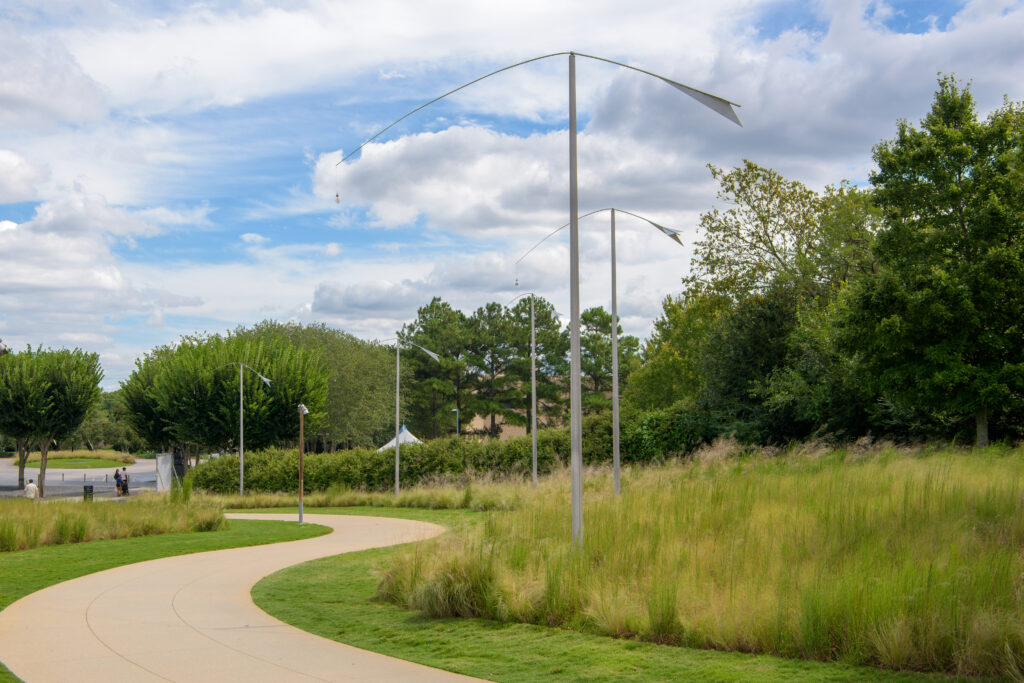Flight Wind Reeds (work of art)
Artwork Info
Key Ideas
- This kinetic sculpture is made from stainless steel. It consists of five forms, each perched on top of a 25-foot-tall pole, that resemble abstracted airplane parts.
- The design of this work was inspired by the aerial stunts practiced by Russian fighter pilots.
- The movement of the wind enables the sculpture to make musical sounds. The bells attached to the beams begin to ring when the sculpture moves in the breeze.
- Bill and Mary Buchen are a New York City-based artist team. They have collaborated for more than 30 years to create sound-based art installations they refer to as “sonic architecture.”
- The Buchens create public art installations and interactive sound sculptures around the world. Their work combines art and music and encourages a sense of community.
Learn More
This stainless steel kinetic sculpture was commissioned for the Museum Park in 2003. Its five aluminum and stainless-steel, aerodynamic elements are references to the mechanics of flight and the abstracted parts of an airplane. The sculpture was inspired by Russian fighter pilots who performed aerial stunts. The pilots flew their planes up to 700 miles per hour. Then they suddenly cut the engines off, causing the planes to flip up and backward. This sculpture performs a similar stunt, spinning and flipping in response to the movement of the wind. The wind also enables the sculpture to make musical sounds. When the sculpture moves in the breeze, the bells attached to the beams begin to ring.
For more than 30 years, New York City-based artists Bill and Mary Buchen have worked together to create public art installations and interactive sound sculptures around the world. The husband-and-wife team design works that combine art and music and encourage a sense of community. Their playground sculptures and “sonic architecture” projects invite people of all ages to play and participate in activities together. The Buchens have spent time with musicians from around the world. They learned from them how to create instruments that make musical sounds from many different cultures.
Sonic architecture refers to the form or shape of the acoustic field generated by our artworks. That field is dependent upon natural phenomena. In the case of the Flight Wind Reeds, the acoustic field — the movement of the reeds and the range and direction of the radiating bell sounds — is constantly changing as the wind “plays” the structures and generates a soundscape.
Mary Buchen
tag: weather
Additional Resources
Resources for Teachers
- Read an article about another art installation by the Buchens.
- Read an interview with the artists.
- Read an article about the artists’ musical sculptures.
Resources for Students
- Read a short article about the original exhibition of Flight Wind Reeds.
- View other interactive works by the Buchens.
- Watch a video about the artists’ sonic architecture creations.


